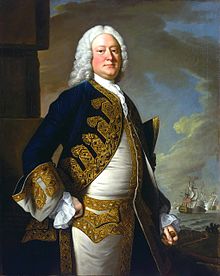You'll have to work really hard for me to agree to your sentiment.
Risk levels are simply a way for higher commanders to promulgate the amount of risk their aviation assets are to take to obtain an identification. Those higher commanders are also Naval. From experience (not directly risk levels, but other issues of aviation risk) it's better not to leave it up to individual ops rooms.
They don't take away from the capability of the appropriate commander to use his assigned assets for individual, unit, or collective self defence. "Failure of a commander to engage the enemy when capable of doing so" is still a chargeable offence...
But yes, I fully support the responsibility of the Comd 1 Cdn Air Div to impose restrictions on the "normal" use of his airplanes in order that people up to and including ship CO's don't do anything stupid, by promulgating orders and other instructions including the chop message; but then let them get on with it and stay out of their shorts.
... and if the situation starts to change then the supported commander should go back and seek approval of higher levels of risk. And don't use the argument that the situation may develop too quickly... that is a failure of the estimate and planning.
Edited to add: And circling back to the original post... contrary to how the original post may be read, pilot's in the USN are disproportionally represented at Command levels solely due to this; the difference is they tend to have had a lot more varied set of experiences at lower ranks than the USAF. The CO of the Carrier is almost always a pilot, and the Comd CVW always is. So of the 4 four ringers in the CSG (Carrier CO, Comd CVW, Comd DESRON, COS), 2-3 are aviators and only 1 is definitely surface... which makes a high proportion of the Comds CSG aviators as well. Therefore there is a higher degree of awareness at Command levels of Naval Maneuver Forces of Aviation risks; of course, there is a *much* higher level of awareness at Command levels of Naval Aviation Forces of Maritime Warfare.
Edited again to add that the full quotation which I paraphrased is:
Misconduct of Commanders in Presence of Enemy
Offences by commanders when in action
73 Every officer in command of a vessel, aircraft, defence establishment, unit or other element of the Canadian Forces who
(a) when under orders to carry out an operation of war or on coming into contact with an enemy that it is the duty of the officer to engage, does not use his utmost exertion to bring the officers and non-commissioned members under his command or his vessel, aircraft or other materiel into action,
(b) being in action, does not, during the action, in the officer’s own person and according to the rank of the officer, encourage his officers and non-commissioned members to fight courageously,
(c) when capable of making a successful defence, surrenders his vessel, aircraft, defence establishment, materiel, unit or other element of the Canadian Forces to the enemy,
(d) being in action, improperly withdraws from the action,
(e) improperly fails to pursue an enemy or to consolidate a position gained,
(f) improperly fails to relieve or assist a known friend to the utmost of his power, or
(g) when in action, improperly forsakes his station,
is guilty of an offence and on conviction, if the officer acted traitorously, shall be sentenced to imprisonment for life, if the officer acted from cowardice, is liable to imprisonment for life or less punishment, and in any other case, is liable to dismissal with disgrace from Her Majesty’s service or to less punishment.
http://laws.justice.gc.ca/eng/acts/N-5/FullText.html



